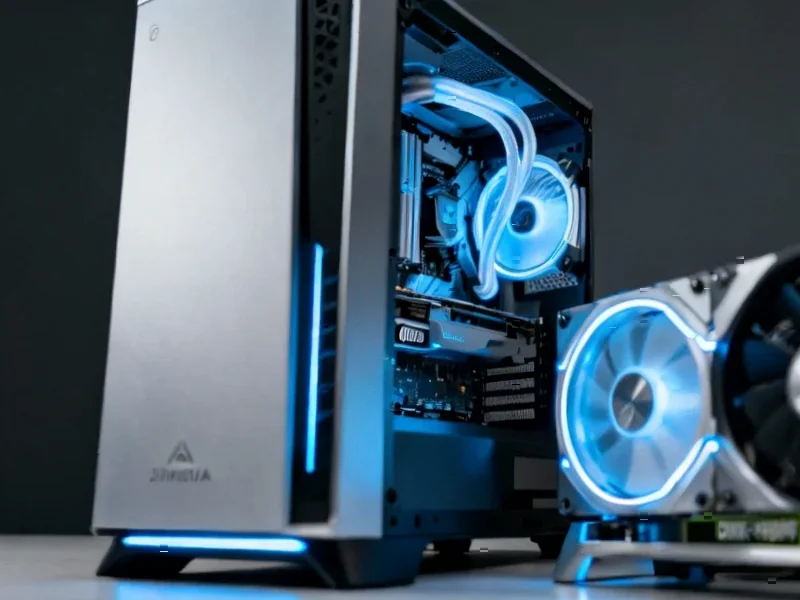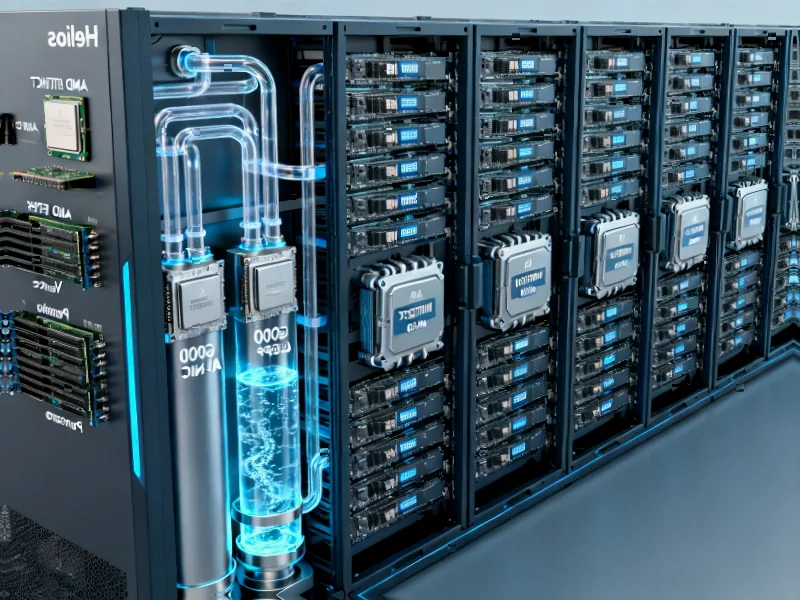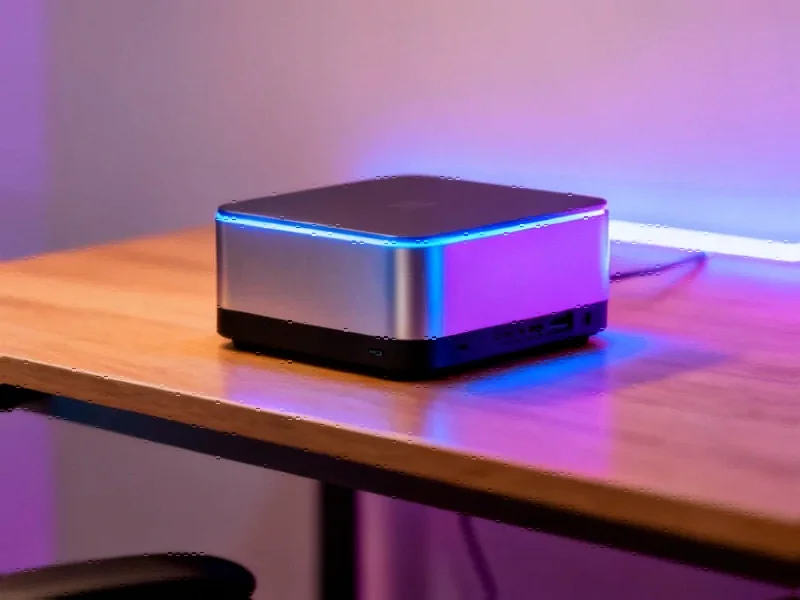In what could be one of the most significant under-the-radar developments in GPU computing this year, Intel has begun shipping initial driver patches for multi-device shared virtual memory (SVM) technology that promises to fundamentally change how multiple accelerators work together. According to patches submitted to the Linux kernel mailing list, Intel’s engineers are building a framework that allows GPUs to directly access each other’s memory using PCIe peer-to-peer connections, effectively creating a unified memory space across multiple devices. This isn’t just incremental improvement—it’s architectural transformation that could reshape how we think about distributed AI workloads.
Table of Contents
The Technical Breakthrough
At its core, Intel’s multi-device SVM implementation tackles one of the most persistent bottlenecks in high-performance computing: memory isolation between devices. Traditional multi-GPU setups require explicit data copying between device memories, creating overhead that can cripple performance in memory-intensive workloads like large language model training. Intel’s approach, as detailed in their kernel patches, enables what they call “direct execution out of peer memory”—meaning GPUs can access and process data residing in another GPU’s memory without intermediate copying.
The technology leverages PCIe peer-to-peer capabilities, which have existed for years but remained underutilized for GPU-to-GPU communication. What makes Intel’s implementation particularly clever is its handling of device-private memory management. As the patches note, “struct pages for device-private memory may take up a significant amount of system memory,” creating scalability challenges. Their solution involves a sophisticated memory reclamation system that automatically migrates data and removes unused memory mappings when devices go offline or system memory pressure increases.
Why This Matters for AI and HPC
This development arrives at a critical juncture in the AI hardware arms race. As models grow exponentially larger—with some LLMs now exceeding trillion-parameter counts—efficient multi-device memory management has become the holy grail of AI infrastructure. Intel’s technology could dramatically reduce the complexity and latency of distributing massive models across multiple accelerators.
“What Intel is demonstrating here is essentially memory pooling for GPUs,” explains Dr. Anya Sharma, a high-performance computing researcher at Stanford. “If they can make this work reliably at scale, it could eliminate one of the biggest pain points in distributed training—the constant data shuffling between devices. For AI workloads specifically, this could mean faster iteration times and the ability to train larger models without completely rearchitecting your infrastructure.”
The implications extend beyond pure performance. By implementing this at the driver level with a shrinker-based memory management system, Intel is addressing real-world operational concerns. The automatic migration of data when devices go offline means better fault tolerance—a crucial feature for large-scale AI training clusters where hardware failures are inevitable rather than exceptional.
Competitive Landscape Implications
Intel’s move places direct pressure on NVIDIA, whose NVLink technology has been the gold standard for high-speed GPU interconnect. While NVLink offers impressive bandwidth, it’s proprietary and limited to NVIDIA’s own hardware ecosystem. Intel’s PCIe-based approach could work across different vendors’ hardware, potentially creating a more open multi-vendor acceleration standard.
Meanwhile, AMD has been pursuing similar goals with its Infinity Fabric technology, but implementation has been slower to materialize in production environments. “Intel appears to be taking a more software-first approach,” observes Michael Chen, principal analyst at TechInsights. “By building this into the open-source Linux graphics driver stack, they’re making it accessible to a broader developer community rather than keeping it locked into proprietary hardware.”
The timing is particularly strategic given the growing demand for AI inference at the edge, where multiple smaller accelerators often need to collaborate efficiently. Intel’s emphasis on PCIe peer-to-peer rather than requiring custom interconnects makes the technology more accessible for edge deployment scenarios where specialized networking hardware isn’t practical.
Technical Challenges and Future Direction
While the potential is enormous, Intel faces significant technical hurdles. PCIe bandwidth, while improving with each generation, still lags behind dedicated interconnects like NVLink. The patches acknowledge this limitation by describing their current implementation as “initial” and focusing on the memory management framework rather than claiming performance breakthroughs.
The memory management system itself represents sophisticated engineering. The dev_pagemap shrinker mechanism—which removes unused device memory mappings during system memory pressure—requires careful balancing between performance and stability. As the documentation notes, “removing and setting up a large dev_pagemap is also quite time-consuming,” suggesting that Intel’s engineers are prioritizing intelligent, demand-driven management over brute-force approaches.
Looking forward, the technology roadmap likely involves integration with Intel’s oneAPI initiative and their broader heterogeneous computing strategy. The ability to seamlessly share memory between CPUs, GPUs, and other accelerators has been a long-standing goal in high-performance computing, and this SVM implementation could be a crucial stepping stone toward that vision.
Industry Impact and Adoption Timeline
For data center operators and AI researchers, the practical implications could be substantial. “If this technology matures as promised, we could see significant reductions in the complexity of multi-GPU programming,” says Raj Patel, CTO of AI infrastructure startup NeuralScale. “The current paradigm requires developers to manually manage data placement and movement across devices. Automatic memory pooling could make distributed training almost as straightforward as single-device training.”
However, adoption won’t happen overnight. The patches are currently in the early review stage, and production-ready drivers are likely months away. The real test will come when independent researchers and enterprises can benchmark the technology against existing solutions. Performance characteristics—particularly latency for cross-device memory accesses—will determine whether this becomes a niche feature or a fundamental advancement.
What’s clear is that Intel is making a serious play for the AI acceleration market beyond just competing on raw compute performance. By addressing the systemic challenges of multi-device programming, they’re positioning themselves as innovators in the software and ecosystem aspects of accelerated computing—areas where NVIDIA has traditionally maintained strong competitive advantages.
The Big Picture
Intel’s multi-device SVM initiative represents more than just another technical feature—it signals a strategic shift in how the company approaches heterogeneous computing. Rather than simply trying to out-muscle competitors on specifications, Intel appears to be focusing on solving fundamental usability challenges that have plagued multi-device computing for years.
The success of this technology could have ripple effects across the entire computing industry. If Intel can deliver on the promise of transparent multi-device memory sharing, it could accelerate the trend toward disaggregated computing resources where applications dynamically leverage whatever accelerators are available without complex programming models. For an industry grappling with the computational demands of increasingly sophisticated AI models, that vision couldn’t be more timely—or more necessary.



